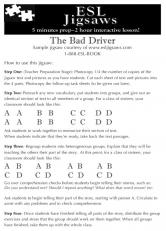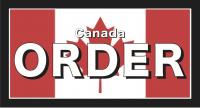ESL Jigsaws
5 Minutes Prep - 2 Hour Interactive Lesson!
Viewing entries tagged with 'beginner'
Canada Day Fun with Maps
Canada Day is approaching. After teaching a unit on Canada, it can be fun to divide students into groups of three, give each group a large sheet of chart paper and ask them to draw the map of Canada. Make sure all Canada maps in your classroom are covered for this exercise. Have each group label the provinces and their capital cities on their map. Once each group has finished, you can display the maps around the classroom. Worthwhile learning can take place as they compare their maps to a real map and realize what they had out of proportion or incorrectly labeled.
Teaching About Victoria Day
Each year when I teach about Victoria Day, some students ask “When will Canada grow up?” Having a head of state determined by birth, living a privileged life in palaces, is archaic and unjust they argue. Severing ties with the British monarchy, however, is not an inevitable step in the evolution of Canadian nationhood.
Reading on a Thrift Store Business Model
Thrift stores are becoming more popular with middle aged clothes shoppers. Seems if you don't want to wear yoga attire to work, thrift stores are some of the best sources for clothing made from a wider variety of fabrics.
Christmas Reading for Low Beginners
The Christmas story below is geared for literacy and low beginner ELL students. It is adapted from Callan’s Canadian Holidays for Low Beginner ESL, but is suitable for use in America as well. Further low beginner exercises on Christmas, with pictures, are found in that book. An audio CD and cloze exercise are also available. (For free material for mid-beginner or intermediate level, check out my blog post on Christmas from last year, here. Or why not try a jigsaw lesson for Christmas? Check out Callan's Holiday Jigsaws.)
Make Canada Study Come Alive
Making your study of Canada for beginner and intermediate ESL come alive is easy with the use of some supplemental materials, like pictures, video and songs. Over the years I have collected about 15 images per province or territory from free Canada calendars, depicting such things as wheat fields, fishing villages, salmon, Douglas Fir trees and igloos that perfectly illustrate aspects of the jigsaws in Callan’s Beginner Canada Jigsaws or Callan’s Canada Jigsaws. I also like to use the video Destination Canada, found in most tourist shops. I show the section of the video related to a given province or territory, either with the sound off and my own narration for lower levels or with the sound on for higher levels.
Go and Went Grammar Errors
Anyone who has taught grammar in a beginner level ESL or EFL class knows that the speed and accuracy with which students complete grammar worksheets is only very weakly correlated with their ability to use the given grammatical structure later in their own speech.
A Fun Way to Teach Body Parts
Jigsaws aren’t the only cooperative learning activity that I do in my classroom. Here is a fun activity for reviewing body parts. I divide the class into groups of three and give each group a sheet of chart paper and a felt marker. I ask the students to take turns being the artist.
Telephone Voice Mail Messages
Many new immigrants answer the phone in their own language. A Korean immigrant might answer, "Yabusayo?" A Chinese immigrant might answer, "Wei?" Often their thinking is that most people who call them speak their language anyway and those who don't will understand that they are simply answering in their own language.
Using Go, Play and Do with Activities
Summer is the natural time for a unit on leisure. This unit is suitable for ESL or EFL students of all levels and has many opportunities for fieldtrips. Low beginners can learn the names of activites and practice "can" and "can't". "I can dance." "I can't dance." Higher level students can practice the intricate soft skills required to politely navigate invitations, both in speaking and in writing. Email is an obvious medium for invitations.
Soft Skill: Who Picks Up the Bill?
We often think of bargaining language as confined to situations like a garage sale or to the purchase of larger items like cars or homes. One of the most common negotiations most people will engage in at some point is who will pay the bill in a restaurant. Not only are there language and soft skills specific to this situation, many cultural assumptions are thrown into the mix. Countries, as well as the cultures within them, differ in their norms about who should pick up the tab and when. Learning the related idioms and other bargaining language but not cracking this cultural code and developing the soft skills to successfully navigate this interaction can lead to social awkwardness as exemplified in the story below.


